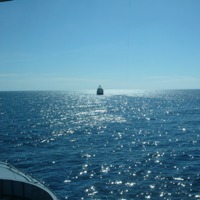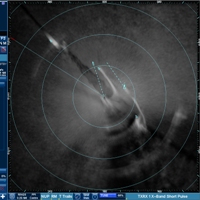Oil Spill Radar Successfully Tested
 During three days of extensive testing, the advanced capability of Consilium‘s oil spill radar to detect oil slicks has been successfully verified. The sea trials were part of an exercise in order to certify satisfactory safety and efficiency in oil spill response operations. The operation, the largest and most comprehensive annual oil spill response exercise in Europe, was conducted by the Norwegian Clean Seas Association For Operating Companies (NOFO) from 8 to 10 June 2010.
During three days of extensive testing, the advanced capability of Consilium‘s oil spill radar to detect oil slicks has been successfully verified. The sea trials were part of an exercise in order to certify satisfactory safety and efficiency in oil spill response operations. The operation, the largest and most comprehensive annual oil spill response exercise in Europe, was conducted by the Norwegian Clean Seas Association For Operating Companies (NOFO) from 8 to 10 June 2010.
In addition to the boats’ crews, approximately an additional 50 people were involved as observers. About ten boats, helicopters and planes participating in the exercise were coordinated and supervised by the Norwegian Coastal Administration. With the kind permission of the Norwegian Coast Guard, the Consilium Selesmar Selux ST 340 radar display and a 12kW 9ft antenna radar sensor were temporally installed on the KV Bergen. The Selux ST radar display was equipped with an add-on ‘special edition’ software package, providing the advanced hardware video processing function to enable the detection and tracking of oil slicks.
 Consilium claims it is the first company in this market segment, able to provide an oil detection feature built into in an IMO/Solas ARPA navigational radar plant. The radar plant is using the same hardware already approved by the Federal Maritime and Hydrographic Agency in Germany and is compliant with the European Maritime Directive (MED). The advantages and benefits are quite obvious. The navigation officer can use the radar display as a normal ARPA radar and then easily switch over to the oil spill function whenever necessary. A master/slave interswitch board is provided as an integral part of the Consilium radar plant. This means that the oil spill radar display can easily be interfaced to all radar sensors of the navigational radar plant.
Consilium claims it is the first company in this market segment, able to provide an oil detection feature built into in an IMO/Solas ARPA navigational radar plant. The radar plant is using the same hardware already approved by the Federal Maritime and Hydrographic Agency in Germany and is compliant with the European Maritime Directive (MED). The advantages and benefits are quite obvious. The navigation officer can use the radar display as a normal ARPA radar and then easily switch over to the oil spill function whenever necessary. A master/slave interswitch board is provided as an integral part of the Consilium radar plant. This means that the oil spill radar display can easily be interfaced to all radar sensors of the navigational radar plant.
The oil spill detection is also achieved by the excellent technical performance of the Consilium radar sensor and by its capability to increase the speed of the antenna rotation to up to 44 revolutions per minute. The advanced video processing allows for operation under all kinds of visibility conditions. The trials were carried out both during day-light, as well as during night-time, with sea state 2 up to sea state 3-4. Under all kinds of sea state conditions, oil slicks were detected and clearly recognised up to the maximum limit of the sea clutter map.
Further to the tests, the recorded data during the trials have lead to a special interface that now has been developed to present the oil slicks directly onto the Consilium ECDIS. For Consilium, the development of the Consilium oil spill radar system represents one of the most comprehensive efforts to date to contribute towards protecting the environment, the people and to improve oil spill response capabilities.






